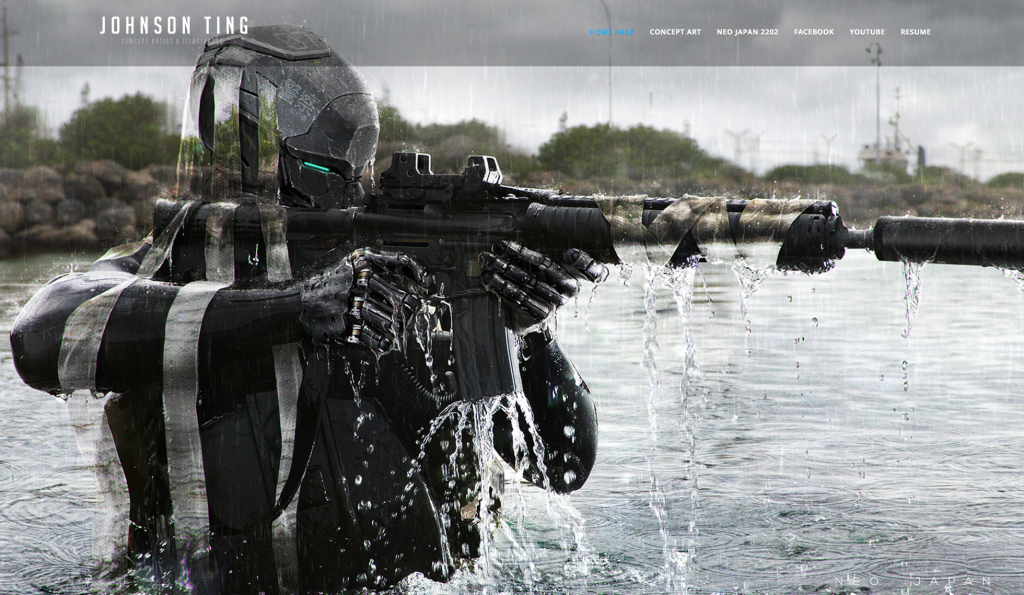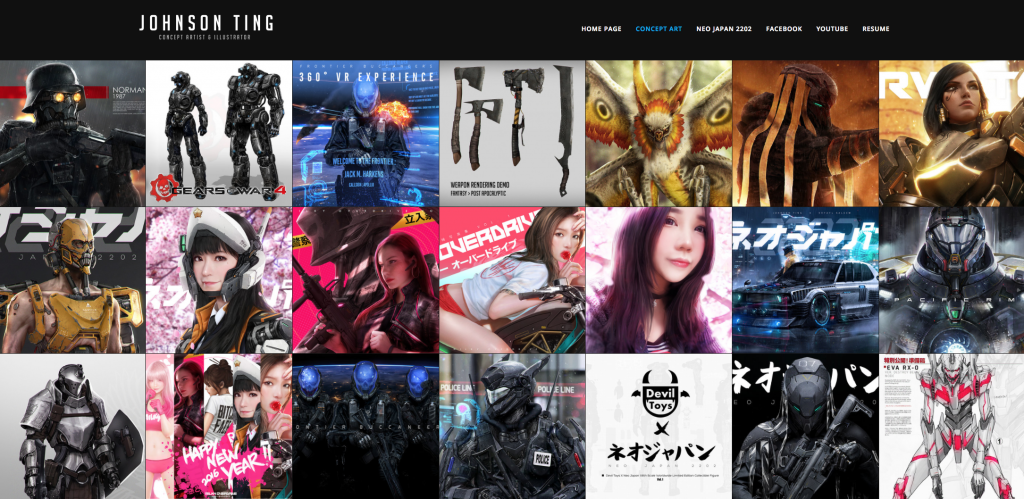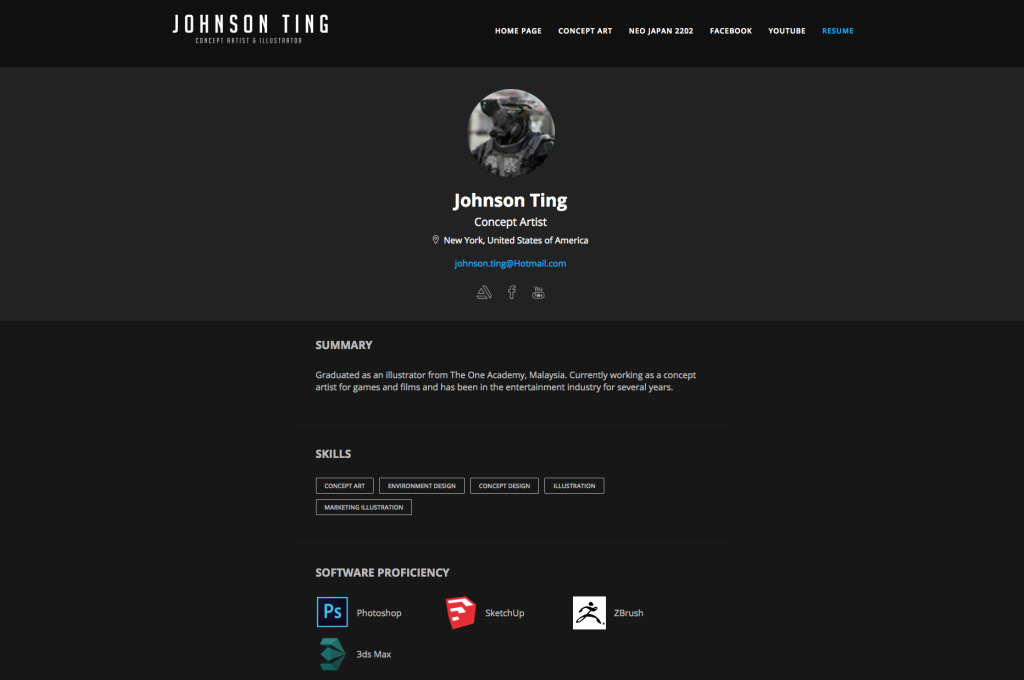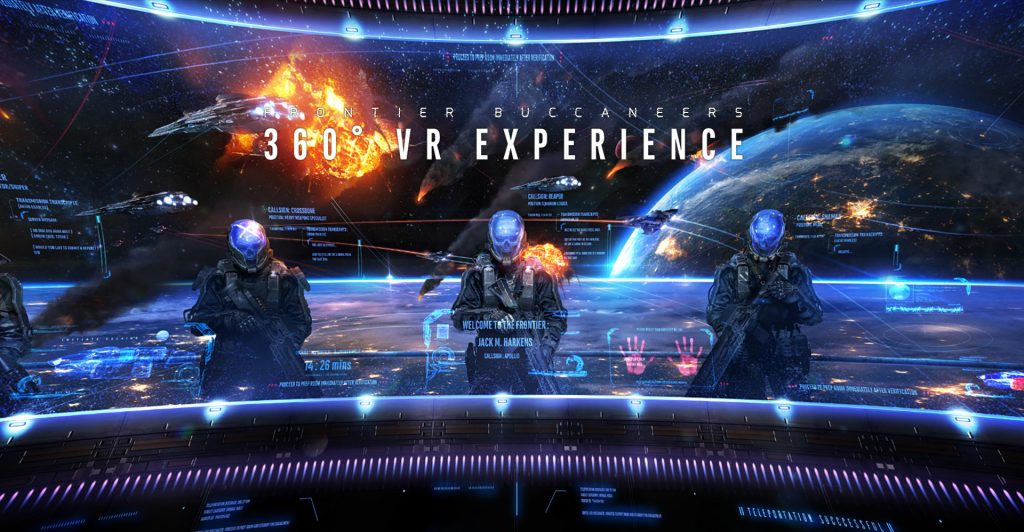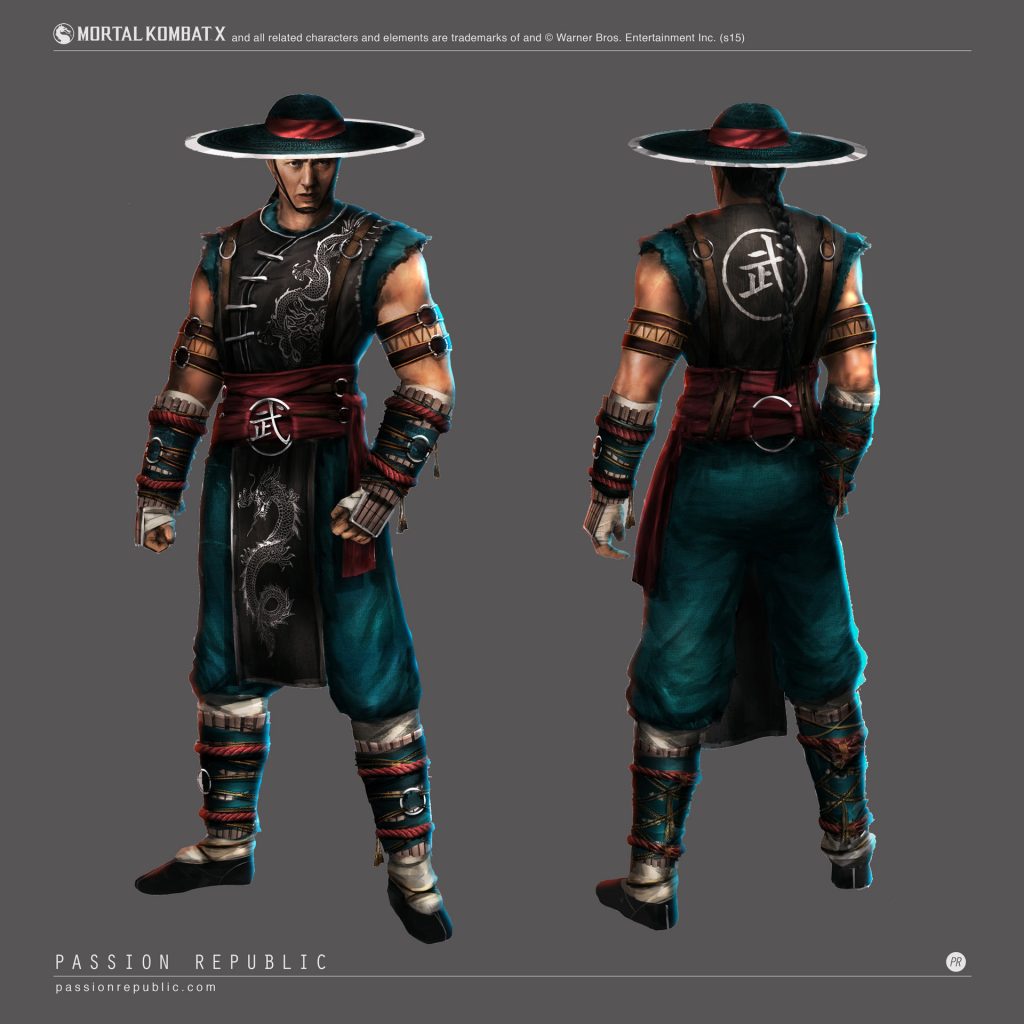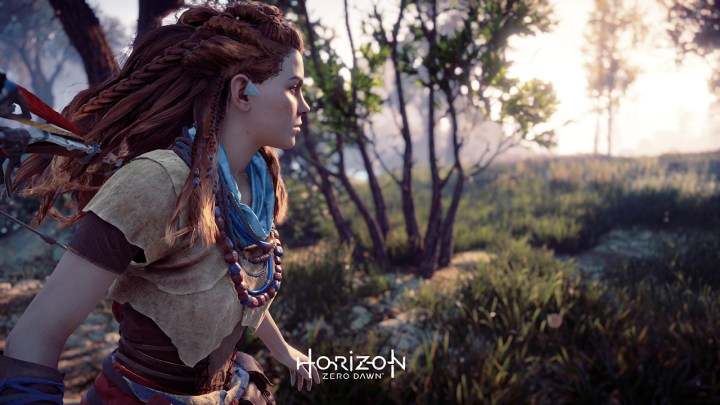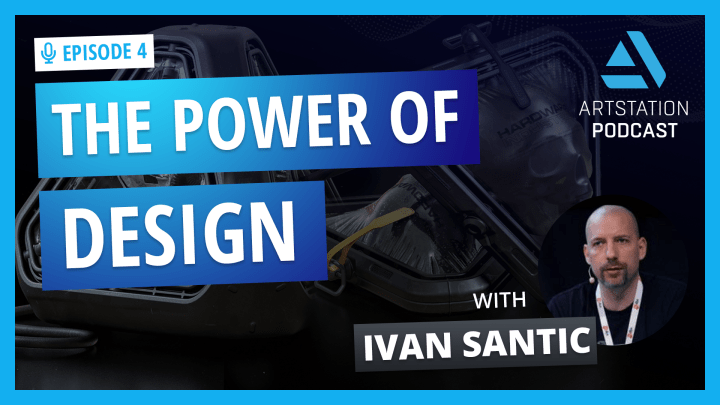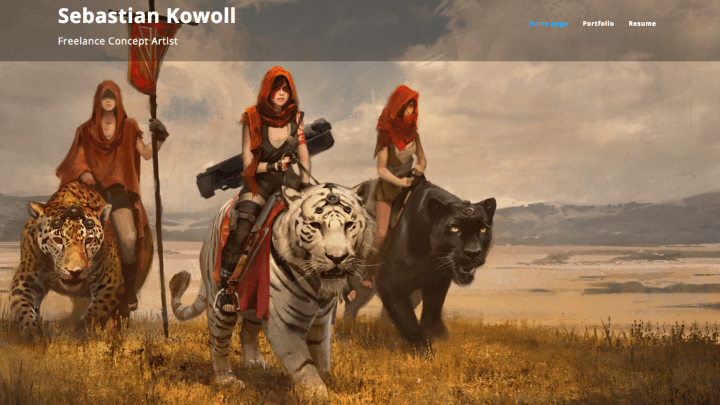Featured Pro Portfolio: Johnson Ting
ArtStation Pro websites allow artists to have their portfolio work, personal projects and resume information all set up in a beautiful and easy to navigate theme in a matter of seconds!
This week we’re featuring the work of Johnson Ting, a Malaysian concept artist now based in New York. Johnson currently works for Project Triforce doing preproduction art and designing collectibles for AAA titles and teaches concept art classes while continuing to develop his main IP Neo Japan 2202.
Check out Johnson’s ArtStation-powered website.
Johnson took the time to answer questions and give some advice on improving your work and portfolio to get noticed in such a competitive industry.
What kind of training or practice did you do before you were able to get a job as a concept artist?
What do you think makes a good or bad portfolio?
This is really subjective but for me I’d usually suggest to my students to be as diversified as they can when they’re just starting out. They have to at least be good at the basics like anatomies, color and light, rendering techniques, etc. After you landed your first job, I’m sure most people would find out their strengths and start to work more in that direction while making sure to stay well rounded. There’s also the option of a more focused portfolio that highlight a specific area of design and those artworks reflect one’s knowledge of how the stuffs work, the functionality of the design and so on.

A bad portfolio is easier to define. Usually if a portfolio is riddled with artworks that have obvious issues with basics such as human anatomy or perspective, it’s usually considered a weaker portfolio since it shows the lack of knowledge in basics. Often it’s very easy to see through the tricks some beginner artists use to cover their mistakes. You can’t cheat and trick an art director that’s looking at your work, and you don’t want to! So I would recommend at least getting your technical skills to a level where you think you can present your artwork comfortably and are able to send the message across while at the same time making sure that level is at least comparable to current standards.
Final advice for aspiring artists:
Making friends in the field is a must in my opinion. I strongly believe that artists should always look out for each other and knowledge should always be shared. Also, it is important to make sure that we enjoy what we do! Sometimes taking a break is extremely important to balance the mind and soul, so a few trips abroad is highly recommended to do some recharging. That’s why I think events such as IFCC, THU, IW, Promised Land etc are so worth going to, not only because you get to meet great people but also because you learn to see another artist’s point of view and refresh your mind. It’s extremely helpful in getting yourself motivated and inspired, so I’d say to try to attend events/workshops like these as often as you can.
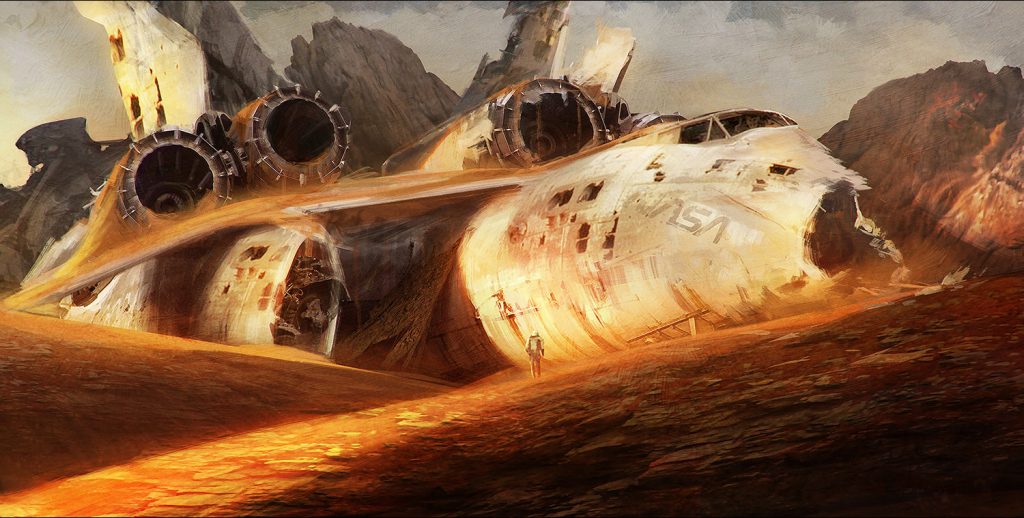
See more of Johnson’s work on his ArtStation Pro website. To find out more about ArtStation Pro portfolio websites, click here.
